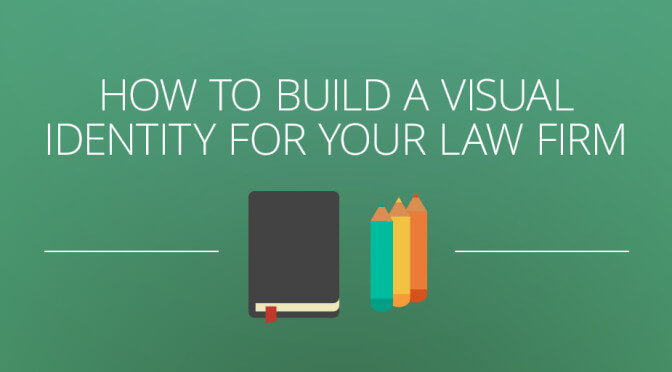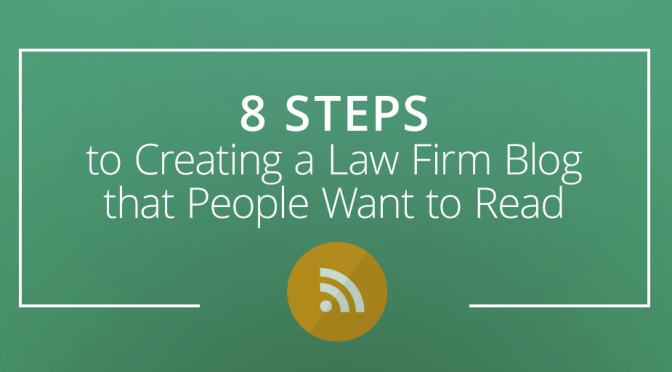It may be unfair and hopelessly shallow, but clients will judge you based on how you look. You know to dress the part in the courtroom, but what about your website and social media presence? Does it look like you: polished, professional, and worthy of a client’s trust?
Be honest. Be brutal. Your clients will be.
A strong brand identity relies on the fine balance of cohesion, presentation, and personality.
There’s a sea of law firms out there that look either out of touch or overly generic. In fact, I’m pretty sure some of these law firms just copy and paste their entire visual identity from other brands. Yikes.
That may be okay (it’s not okay) for fly by night, side-eye worthy amateurs, but not you. You’re the best, and you’ve got to look the best, or no one else will know it, except for me and your mother.
By the end of this post, you’ll learn exactly how to create a visual identity that looks smart, savvy, and purposeful. This visual identity will make your brand more memorable and more trustworthy. Ready to get started? Let’s go!
What message would you like to convey?
Here is the best place to start. Would you live to cultivate a friendly persona or an intellectual one? They aren’t mutually exclusive, however you’re looking for the dominant tone in your visual identity.
Perhaps it’s best to think of your ideal client. Are you in family law? Are you an entertainment attorney? Do you work primarily in real estate? Your target clientele shifts depending on what type of law you specialize in. Keeping that client in mind, you can create a brand identity that reaches and relates to them.
[Tweet “You can create a brand identity that reaches and relates to them.”]How can a law firm that specializes in entertainment be satisfied with a dated and bland visual identity? Or, how can a firm that focuses on family law create a visual identity that’s aloof and unsympathetic?
Actually, it’s easy and a lot of brands do it unintentionally. However, it’s also easy to create a visual identity that deliberately gives off the vibe you wish to present. Let’s take a look at the components that create your visual identity.
The Components of Your Visual Identity:
Color
Color has a profound impact on us. One color can make us feel calm, another can make us feel creative. Studies show that the color called drunk tank pink can actually reduce violent and hostile behavior. There’s little doubt that color influences our psychology.
This is why you need to think about what colors to use in your visual branding. Each color affects us differently. Depending on the message you’d like to convey, use a corresponding color to subtly but effectively echo it.
Here’s a breakdown of each color and how the brain interprets it:
Green – Fresh, Organic, Natural, Eco-friendly, Gentle
Blue – Trustworthy, Secure, Peaceful, Calm, Loyal
Purple – Creative, Unique, Vibrant, Luxurious, Royal
Yellow – Friendly, Excited, Positive, Joyful, Energetic
Orange – Playful, Warm, Cheerful, Social, Confident
Red – Passionate, Bold, Strong, Dynamic, Brave
Pink – Feminine, Sweet, Compassionate, Affectionate, Caring
Brown – Reliable, Approachable, Stable, Dependable, Practical
Gray – Modern, Neutral, Conservative, Futuristic, Advanced
Black – Sophisticated, Traditional, Classic, Powerful, Elegant
White – Pure, Good, Clean, Honest, Open
You’ll probably want a combination of two or three colors to create a unique and intentional visual identity. For example, the color combinations of blue and gray say modern yet trustworthy, while brown and pink say dependable and compassionate.
Do you need help deciding which colors should represent you? Browse the most loved color palettes of all time over at ColourLovers. Pick up inspiration by the user-submitted color palettes and use it to jump-start your brand identity.
Graphics
Graphics are a huge part of visual branding. Along with color, graphics are an immediate way to communicate your brand’s unique identity. This includes images, photos, icons, infographics, and other visual elements.
As they say, a picture is worth a thousand words. If you want to immediately impress your firm’s identity, personality, and tone, you need to intersperse graphical elements into your online content.
On your general website, your blog, and your social media accounts, use graphics to craft a uniquely identifiable visual brand.
When you post an image on your blog or social media accounts, make sure that it:
- includes your brand logo. In case your image goes viral, you want to leave your calling card.
- continues the same look and feel as the rest of your brand. Consistency is important for developing a strong visual identity.
- supports the text if on your blog. Your image should make sense and emphasize the blog post.
- is high quality. There’s nothing worse than a tiny image that your visitors have to squint to see.
Where to Find Images
Speaking of high quality, there’s no reason to settle for cheesy images when there’s plenty of free and amazing stock libraries on the web. Check out this list of my favorite stock images (and subscribe for even more resources).
Be sure to check the license and usage requirements. Most of these sites require no attribution, but terms can change at any moment.
Logo
Your logo is the best way to instantly impress who you are as a brand. Think of your logo as a first introduction. It can immediately convey the tone and personality of your brand before your client has an opportunity to look at your services, testimonials, or blog posts.
Because your logo represents your brand, don’t go ordinary and buy a template that every other law firm uses. To really stand out, commission an original logo from a reputable logo designer. Find designers, and their portfolios, on Dribbble or Logopond.
Fonts
Check out Creative Fabrica for awesome free fonts!
Last, but not least, is your font choice. Your font says a lot about your brand identity. It can say that you’re fun and hip or serious and staid.
Font libraries like Fontspace and 1001 Fonts let you search for fonts based on the type of mood you’d like to convey. Simply type in “classic” or “modern” to find the perfect font for your brand.
Put it to Work
Now that you’ve been introduced to the four components to your visual identity, it’s time to put it to work on your blog and social media platforms. Here’s how:
Your blog
Be sure to include an image on each and every blog post you write. Not only will it provide visual interest to your post, it will subtly reiterate your brand identity.
One in seven people on earth use Facebook. No doubt some of your clients use this popular platform. Take advantage of the cover photo as a prime opportunity to reinforce your brand message.
With 300 million monthly users, LinkedIn is a powerful marketing tool. Use a professional image here to represent your brand.
On Twitter, use the header photo as another opportunity to brand just like on Facebook.
Not on Pinterest? Pins last longer than Facebook posts, and can greatly expand your marketing reach. On Pinterest, use similar cover images to create a consistent visual branding.
Final Thoughts
To create a visual identity that mirrors your brand message, remember to ask yourself what your clients need and expect from you. Once you understand what that is, use these tips to build your visual identity.
Don’t forget to download our extra set of recommended tools to help you create a winning visual brand identity for your law firm.













 Screenshot of Zachar
Screenshot of Zachar  A
A  A Yelp search for “law firms in Phoenix, AZ”
A Yelp search for “law firms in Phoenix, AZ”







